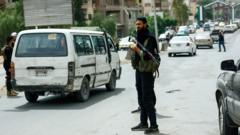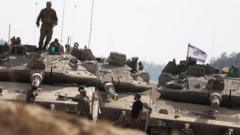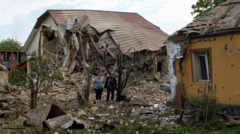In a significant escalation of its military campaign against a long-standing Maoist insurgency, Indian security forces reportedly killed 27 individuals in recent operations, including senior rebel leaders. The move has drawn criticism from human rights advocates concerned about potential civilian casualties.
India Intensifies Military Operations Against Maoist Insurgents

India Intensifies Military Operations Against Maoist Insurgents
Security forces ramp up efforts to eradicate leftist rebels in Chhattisgarh, resulting in multiple casualties amid concerns of civilian harm.
In a decisive military operation on Wednesday, security forces in central India claimed responsibility for the deaths of at least 27 individuals, purportedly targeting communist militants as part of a larger government initiative to eliminate a decades-long Maoist insurgency. Prabhat Kumar, the police chief for Chhattisgarh state, indicated that “several senior-level Maoist cadres” were among the casualties, with local reports suggesting that the prominent rebel leader Nambala Keshav Rao, known as Basavaraju, was among the deceased.
The recent operation follows an even more pronounced clash last week, where authorities announced the elimination of 31 insurgents in a remote area straddling Chhattisgarh and its neighboring state. Home Minister Amit Shah characterized this subsequent effort as a “historic breakthrough.” He has publicly set a deadline of March for the complete eradication of the insurgency that has persisted intermittently for over 50 years.
However, the aggressive campaign has raised alarms among human rights defenders who are demanding thorough investigations. They are concerned that the fatalities may include innocent civilians rather than solely militants. Bela Bhatia, a legal advocate involved in areas directly affected by the conflict, emphasized the importance of the timely identification of victims' bodies by their families, criticizing the government's practice of delaying corpse presentations for days on end. This ongoing military strategy places both the government's approach and the humanitarian implications in the spotlight as operations continue to unfold.




















